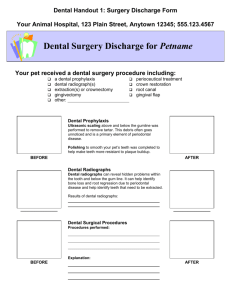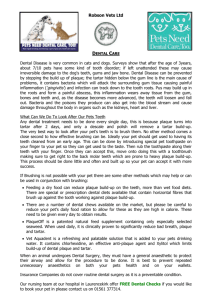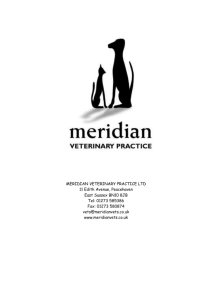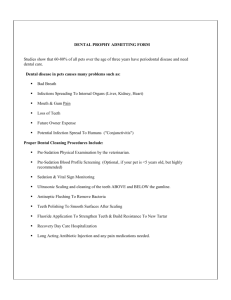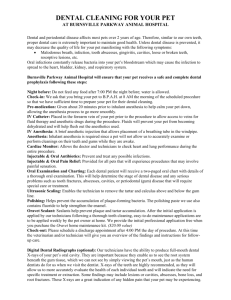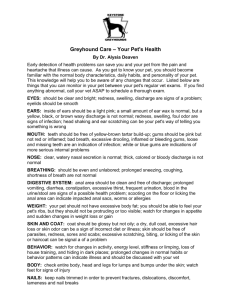Tips For Recognizing Dental Disease In Dogs And Cats
advertisement
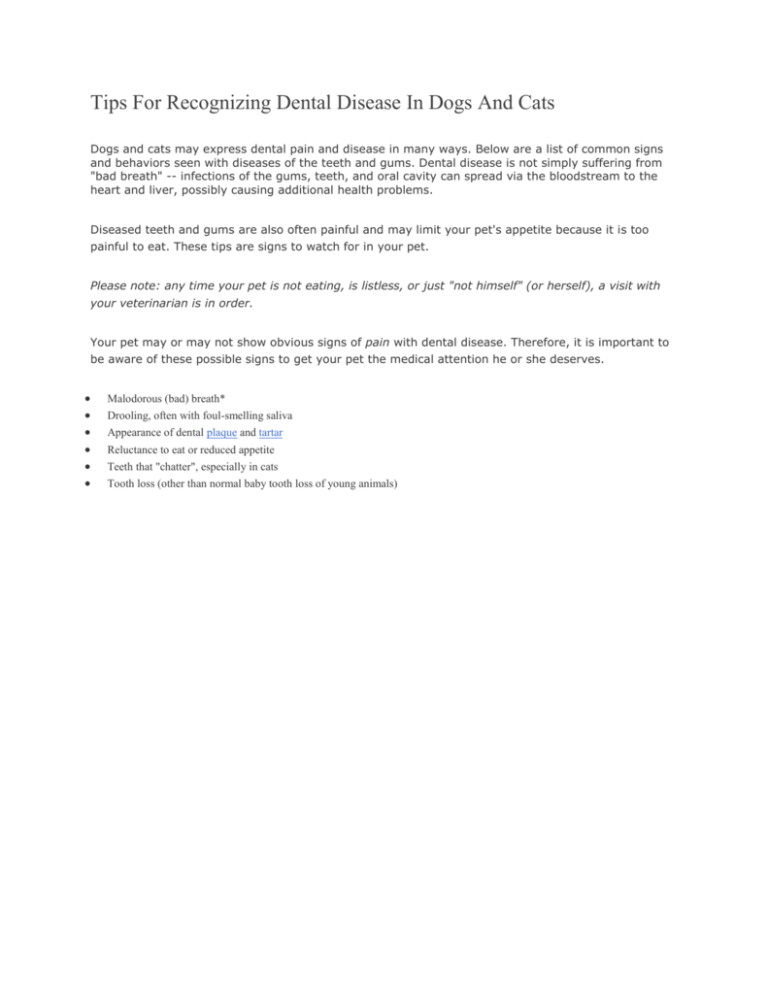
Tips For Recognizing Dental Disease In Dogs And Cats Dogs and cats may express dental pain and disease in many ways. Below are a list of common signs and behaviors seen with diseases of the teeth and gums. Dental disease is not simply suffering from "bad breath" -- infections of the gums, teeth, and oral cavity can spread via the bloodstream to the heart and liver, possibly causing additional health problems. Diseased teeth and gums are also often painful and may limit your pet's appetite because it is too painful to eat. These tips are signs to watch for in your pet. Please note: any time your pet is not eating, is listless, or just "not himself" (or herself), a visit with your veterinarian is in order. Your pet may or may not show obvious signs of pain with dental disease. Therefore, it is important to be aware of these possible signs to get your pet the medical attention he or she deserves. Malodorous (bad) breath* Drooling, often with foul-smelling saliva Appearance of dental plaque and tartar Reluctance to eat or reduced appetite Teeth that "chatter", especially in cats Tooth loss (other than normal baby tooth loss of young animals)






